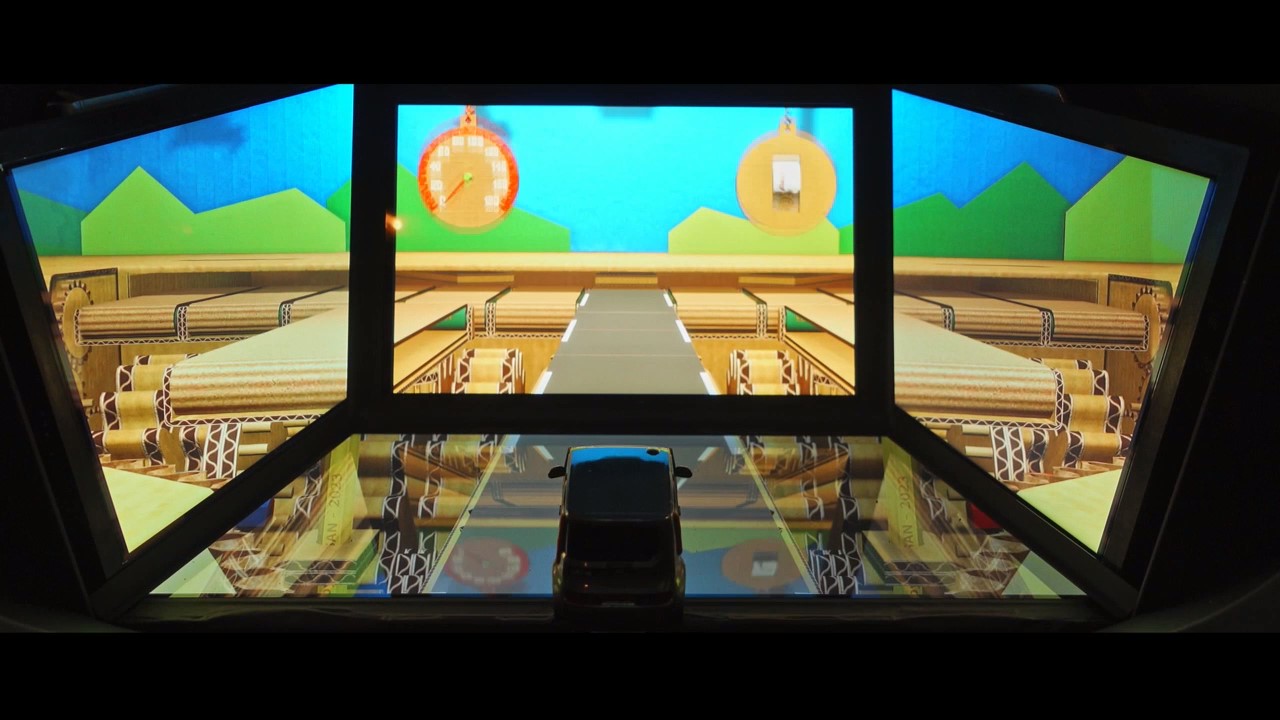Co-creative innovation: the Ao-Solar Extender
EV users and fellow engineers: Bringing these folk together, Nissan engineer Junichi Inoue works to advance technological innovation with a focus on co-creation. Through combining his own experience in EV development and his team members' expertise, he is shaping a user-centric EV future through co-creative innovation.
Ao-Solar Extender development team

Junichi Inoue
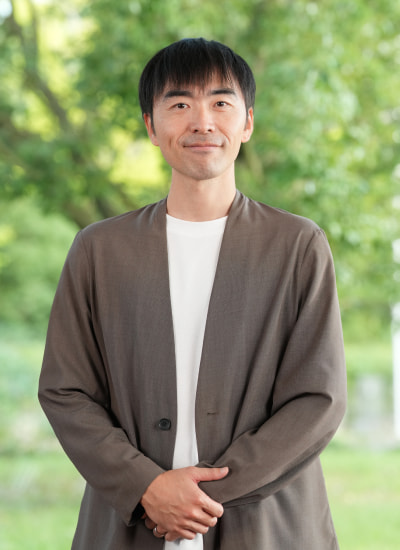
Kazuki Aoyama

Yoshiho Yamada

Keita Abe
Realizing charge-free EVs by extending solar panels
The Ao-Solar Extender is the concept model of a solar-system designed to be mounted on the roof of the Nissan Sakura. Its name refers to the Japanese term "Aozora," meaning "blue sky," combined with "solar panel." The Ao-Solar Extender features an electric slide-operation system where the solar panel automatically slides out when the car is parked and retracts when driving.
Traditionally, the electricity output of automotive solar panels was constrained by the limited amount of space available in cars' roof area. The Ao-Solar Extender overcomes this barrier by doubling the panel area while using the same solar cells. This innovative approach was highly evaluated and received the Grand Prize for New Value Co-Creation in Nissan's 2021 internal awards.
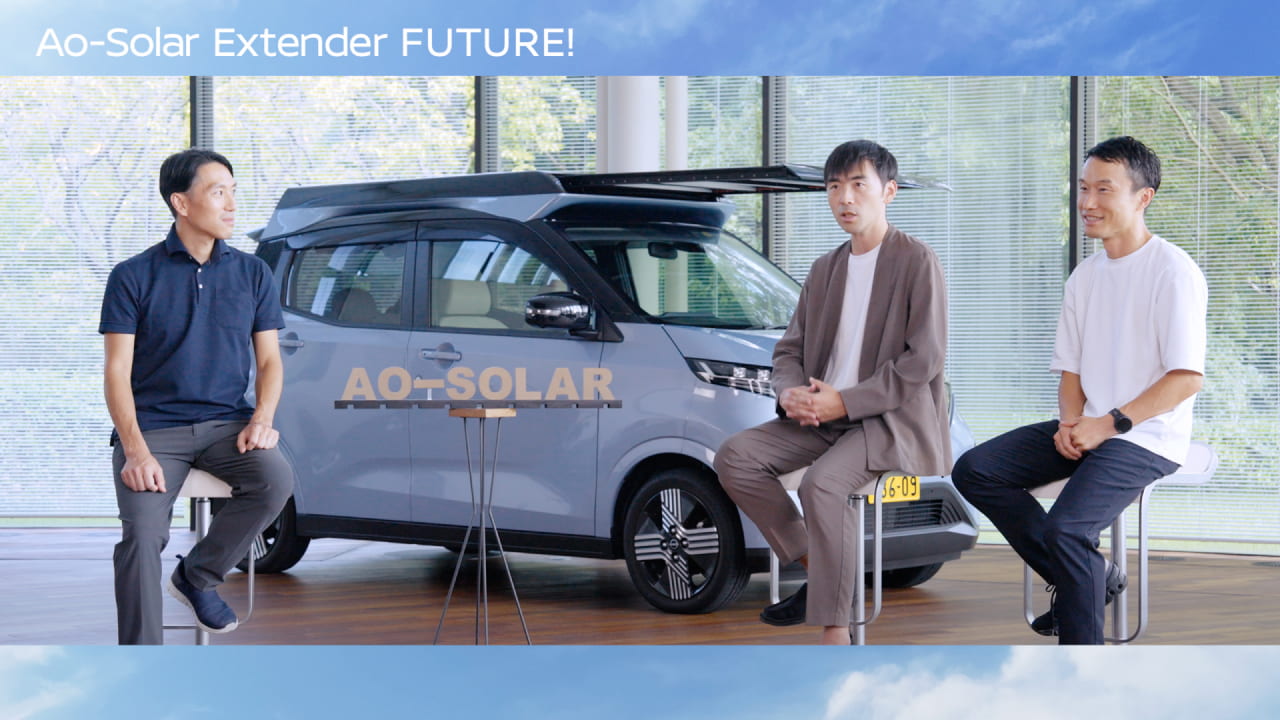
The Ao-Solar Extender aims to generate sufficient electricity to cover 3,000 kilometers of driving per year. According to the market analysis of Nissan Sakura users' driving data, most users are short-distance-drivers who mainly use their vehicles for daily shopping and school runs. Therefore, Sakura users' annual mileage tends to be lower than that of LEAF or Ariya users. In fact, if enough electricity is generated for 3,000 km of driving per year, a significant portion of short-distance drivers are expected to enjoy charge-free EV use, with little to no need for external charging.
Slide mechanism born from team's expertise and prototyping attempts
The slide mechanism was inspired by a car umbrella that Inoue came across on the internet. It is an umbrella-like attachment mounted on the roof of a vehicle, designed to protect the car body from falling debris and direct sunlight. While the idea of an opening and retracting solar panel showed potential, the team's engineer, Keita Abe, pointed out the difficulties of realizing such a complex structure. To refine the concept, the team held an ideation workshop. There, the team members came up with the slide mechanism idea. Several other core ideas for the Ao-Solar Extender were established in the workshop: an electric operation system for user ease, automatic retraction during strong winds, compatibility with existing vehicle bodies, the ability to monitor solar power level via an app and the goal of reducing the hassle of EV charging for users.
Members further developed the concept by building a mock-up to test the feasibility of the slide mechanism proposed. Kazuki Aoyama, the team's designer, devised a streamlined shape that harmonizes with the airflow, transforming the Ao-Solar Extender into its current form. And while conducting power generation experiments with the initial prototype, engineer Yoshiho Yamada ― an EV owner himself ― envisioned the solar panel as a way to support EV users' everyday life. If busy users are freed from charging obligations, they could use the time saved to enrich their personal lives.
That is why the Ao-Solar Extender was developed specifically for the Nissan Sakura, a car that is deeply engaged with users' daily lives and mobility needs.
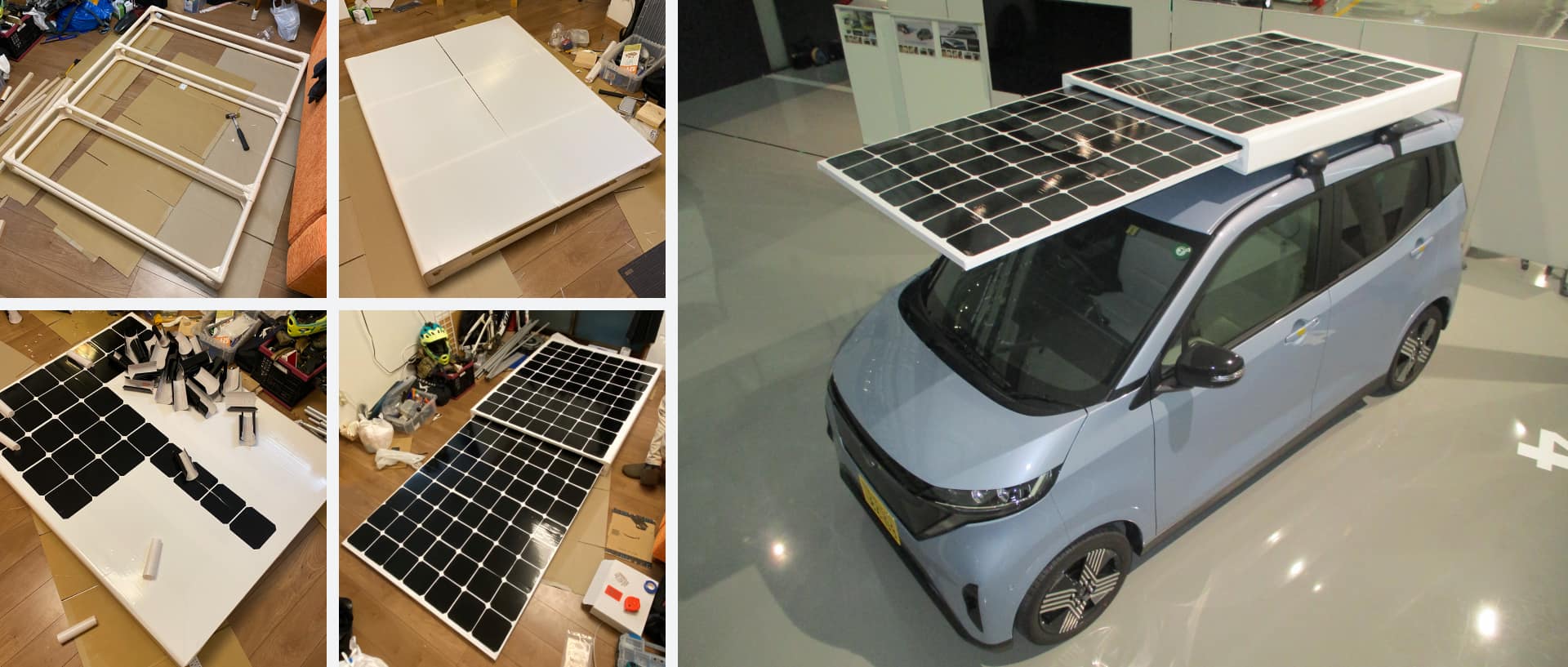
An app that gamifies everyday solar power generation
The team is also developing an app where users can check the Ao-Solar Extender's power status and interact with other users. Its real-time information helps reassure user confidence in the solar panels' performance. For example, if the power output is unexpectedly low on a relatively sunny day, this may be due to strong winds that caused the Ao-Solar Extender to automatically retract, and the app will inform the user of such ― helping users understand the situation and promote trust in the machinery.
The app also enables users to share their Ao-Solar Extender's power status with other users and even compete with them. The idea was inspired by Inoue's personal experience as a home solar panel user himself, where he enjoys checking the panels' power status and monitors his app on a daily basis. Solar power generation not only varies depending on weather and sunlight level but is also affected by the panel angle and the surface cleanliness. Turning this variability on its head, Inoue and his team have added a playful, game-like element to power generation and user interaction.
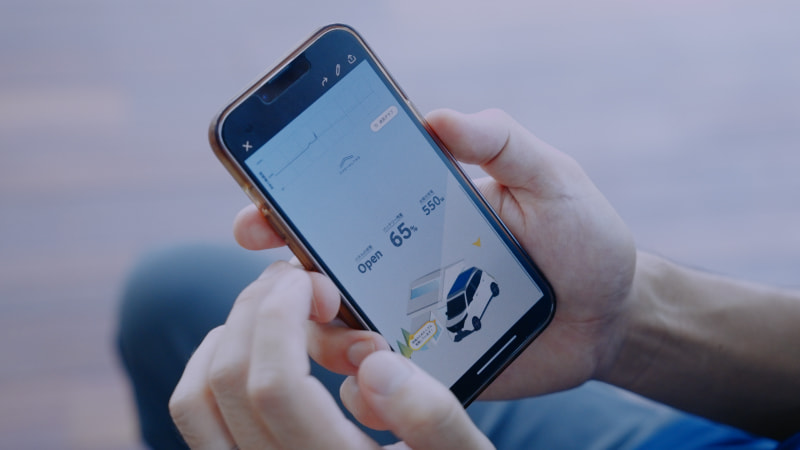
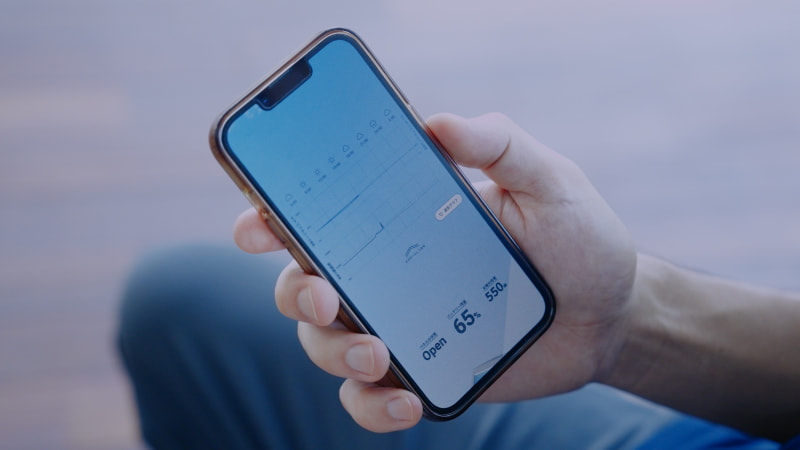

The ultimate vehicle of the future, free from refueling and EV charging
Beyond the implementation of the Ao-Solar Extender, Inoue imagines a future where solar-powered EVs become part of daily life. The idea of a completely charge-free EV becomes increasingly realistic as solar panel performances continue to improve. The ultimate car ― a vehicle liberated from both refueling and charging ― may be just around the corner. By then, solar panels might be more seamlessly integrated into the vehicle itself, taking an entirely different form from the add-on structure of the current Ao-Solar Extender.
Furthermore, EVs equipped with the Ao-Solar Extender may utilize its solar power generation capability to serve as backup power sources during emergencies. The widespread adoption of solar power generation for EVs has the potential to transform not only daily life, but also life in times of crisis.
To learn about regional challenges such as varying sunlight levels, strong winds, snowfall and volcanic ash, Inoue emphasizes the importance of engaging directly with actual Sakura users and other EV users across Japan. Through detailed interviews and active communication with users, he aims to expand the scope of co-creation and pursue open innovation.
Related Content
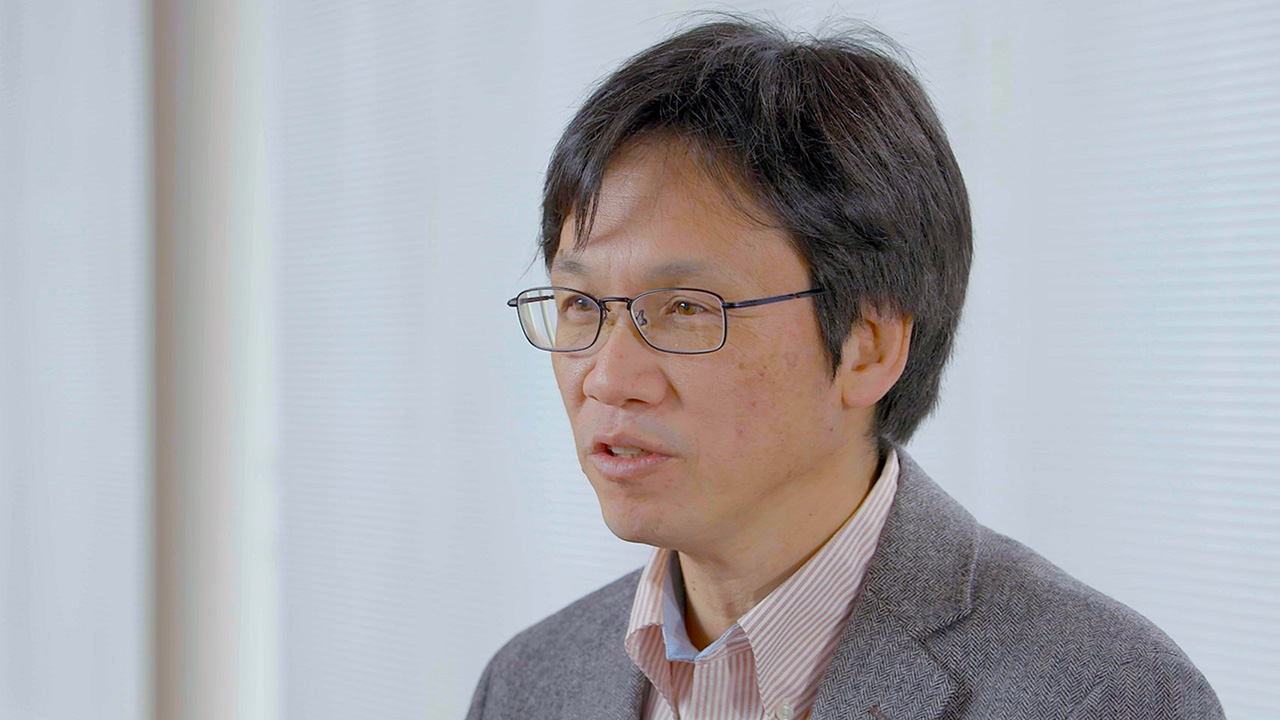
‘Another innovation’: the pursuit of new perspectives
